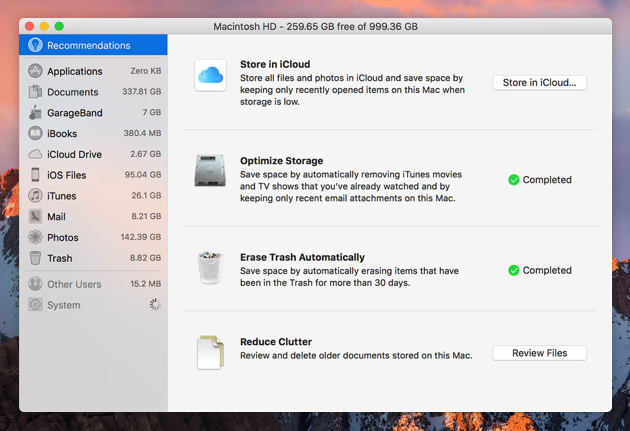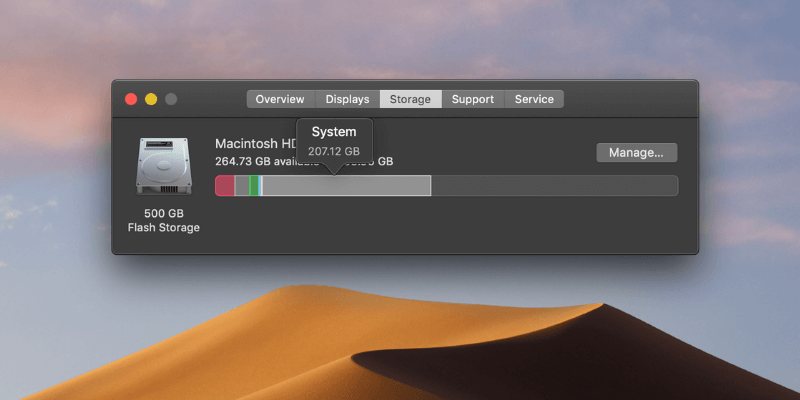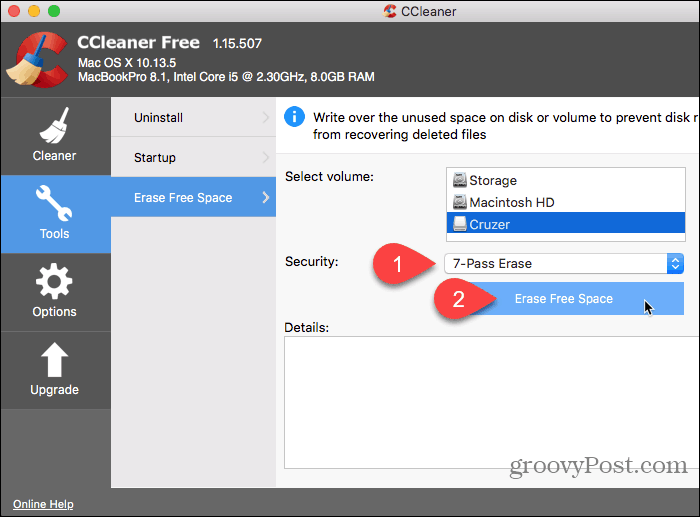- Free Disk Space Macbook
- Free Disk Space Macbook
- How To Free Disk Space Macbook
- How To Get More Free Disk Space Mac
- Free Space On Startup Disc Mac
- Mac Os Free Space


This article describes several ways to free-up space on your Mac so that you can increase available space on your computer: Related: Mac OS X: What is “other” storage and how to remove. 1.Determine how much disk space you have. Open Disk Utility (Finder Applications Utilities Disk Utility), then click your disk then click info, as. Option 5: From Disk Utility. You can also view your free disk space from your Mac’s Disk Utility app. Open Spotlight by clicking the magnifying glass in the upper-right corner of the screen.
The solid-state drive (SSD) that comes in your Mac is a double-edged sword. On the one hand, SSDs make your MacBook incredibly fast. But, on the other hand, flash storage is quite expensive, and therefore, the Mac still comes with a tiny 128GB SSD by default.
You could upgrade and get a bigger SSD, but don’t think it’ll come cheap.
So, if you’re seeing the notification ‘start up disk is full on Mac’ on your screen and there’s no more space for your documents, music, and videos, you need to be proactive. Low storage space on Mac isn’t ideal because it will slow things down and your device will start acting strangely – app crashes, frequent shutdowns, screen freezes, and much more. Toyota 1zr fe engine manual.
Obviously, you can free disk space by just doing a cursory find-and-delete for files that taking up a lot of space and other things that you have downloaded, but don’t need those files anymore. However, unfortunately, this is not going to get you too far.
While you can still manually delete files, here are a few cleaning hacks that will help you to reclaim disk space faster.
- Move your files to the Cloud
For moving files and documents to the Cloud, you’ll probably need to use iCloud or Dropbox. You can send all the document folders and data from your folder to iCloud or Dropbox. When you need those files, you can simply download them with a press of a button.
Download sap keygen. By making use of a cloud syncing service, you can free up an impressive amount of storage space.
- Clean the Downloads folder
This tip is obvious and yet, many people forget to deal with the Downloads folder. This folder is usually filled with large files that are not needed anymore. All you have to do is open your Finder and go to your Downloads folder. Delete everything that you don’t need. You can sort by file size to delete the files that are taking up maximum space.
However, don’t forget to open the folders. Because, whenever you open an archive file, it unzips automatically into a folder. And you’ll find those folders sitting there, taking up a lot of disk space.
- Clean up email attachments
Did you know that you can automatically delete old email attachments? The solution is CleanMyMac. You have to run a scan, go to mail attachments and look at all the attachments that can be deleted. Click ‘Clean’ and your disk is going to be free of them.
If you’re using IMAP, those attachments are still going to be available on your email server. So, you can delete them without worrying much.
- Remove language files
Mac applications come with a wide range of language files for each language that they support. This allows you to switch the language of your system and use the application in your preferred language.
However, you might be only using one language on your system, and hence, those hundreds of other languages are only using megabytes of disk space for no reason. You can remove language files by using CleanMyMac or any other cleaner tool.
- Find and delete duplicate files
As you explore your drive, you might come across two or three versions of the same file. It might be that you have downloaded the same file more than once by mistake or you’ve added music to your iTunes account, but those songs still exist in their original location. You can free up a lot of space by deleting and removing those duplicate files.
There are two ways to find and delete duplicate files. First, you can manually investigate your drive and delete those files. Second, you can download apps from the App Store that will help to automatically detect duplicate files and remove them.
- Empty the trash can
So, you’ve deleted files/images/music from your drive and think that’s enough? Think again! The Trash on your Mac is the same as Windows’ Recycle Bin. When you delete a file, it doesn’t permanently get deleted. It gets sent to the Trash so that if you change your mind, you can restore them later.
To remove files completely and free disk space, you have to empty the Trash. Since Macs have multiple Trash cans, you need to empty all of them.
Your user account’s main Trash can be deleted by selecting Empty Trash. You’ll get this option by right-clicking on the Trash icon and as you click Empty Trash, the files will be deleted permanently.
iMovie, iPhoto, and Mail have their own trash cans. If you have deleted media files from these applications, you need to empty their trash cans as well.
So, go ahead and use these hacks to free up storage space on your Mac. Download good workmanship in electrical construction pdf free. And once you’ve done that, you’ll find your device working faster and better, without any glitches.
How to Clean Your Mac's Hard Disk Drive?
SSD (Solid State Drives) is fast, stable, and offers great performance. Unfortunately, compared to HDDs (Hard Disk Drives), the capacity-to-cost ratio is not good. There are, however, methods to free up hard drives to obtain additional capacity for computer systems, including the macOS.
Certain data and files are important, and you will not want to delete or move them. However, some files are redundant and can be removed without consequences. If you know which files you can safely delete, you can free up this space. Although the Windows operating system is known for inefficient clutter, the macOS also produces unnecessary files that take valuable disk space. In this article, we describe some methods on how to clean macOS disk space.
Video showing How to Obtain Free Space on Your Mac's Drive

Table of Contents:
It is recommended to run a free scan with Combo Cleaner - a tool to detect malware and fix computer errors. You will need to purchase the full version to remove infections and eliminate computer errors. Free trial available. Combo Cleaner is owned and operated by Rcs Lt, the parent company of PCRisk.com read more.
Inspect the drive to ensure that the system is running out of free space
Some issues relating to lack of storage might be difficult to determine and can even be a result of fake error logs. So, first, ensure that the system is, in fact, running out of free space. There are two methods to check available space on a hard drive:
1. Access the Apple menu and select About this Mac. Choose the Storage tab.
2. More detailed information can be found within the Disk Utility feature, which is located in the Applications folder under Utilities. Once Disk Utility is launched, select the drive connected to the Mac.
Begin by cleaning Trash
Once you are sure that the drive is actually full, the next step is to simply clean the computer (as if you were cleaning your home: you empty the trash). Open the Finder menu and choose Empty Trash. Bear in mind that some applications, such as Mail, iMovie, iPhoto, and others, have their own Trash. To clean those apps, follow the steps below:
1. Click Mailbox and choose Erase Deleted Items.
2. Select In All Account and Mailbox.
3. Finally click Erase Junk.

Alternatively, to avoid permanently losing your files, choose to archive your emails by following the steps below.
iPhoto
1. Click on iPhoto from the menu at the top of the screen.
2. Choose Empty iPhoto Trash.
iMovie
1. Click on File from the menu on top of your screen.
2. Select Move to Trash or File.
3. Then choose Move Rejected Clipsto Trash.
Free Disk Space Macbook
Clear unnecessary Downloads
The Downloads folder stores all files downloaded from the Internet. Often, these are forgotten after use and continue to use storage space. This is an excellent area to address when looking to free up space on your drive. Delete all redundant Download files.
1. Open Finder.
2. In the sidebar, choose the Downloads folder. Disk image (.dmg) files commonly occupy the most unused storage space.

Remove unused applications
Unused apps in isolation might not take up a great deal of space, but the amount of hard drive storage used by them collectively can be significant. Furthermore, removing apps on Macs is simple, especially those installed through App Store.
1. To delete them, open Launchpad.
2. Click and hold the program's icon you wish to remove.
3. When the icon starts to animate, click the Delete (x) button.
4. To delete any other app, drag the icon to Trash and then empty Trash.
Free Disk Space Macbook
Make space without losing any data
How To Free Disk Space Macbook
The best way to gain extra space on the Mac is to move non-executable files such as photos, movies, documents, and any large files, to add external storage, for example, an external drive, USB drive, DVD/CD drive, or cloud storage.
How To Get More Free Disk Space Mac
Compress large items
Another method to obtain some free space is to compress files. Compressed files remain on the computer but occupy less space. On the other hand, this can be less efficient than deleting or moving files to external storage. To find the largest files on the drive, follow the steps below:
1. Open Finder from the sidebar.
2. Select the Device (the label you provided) and type criteria into the search field.
3. When your search location appears (for example, This Mac), click the Add (+) button.
4. Click the first drop-down menu, and choose Other.
5. Find the logical size option, enable it, and then click OK.
6. Choose the 'is greater than' condition and type the amount (i.e., 50 Mb).
7. To compress items, right-click or hold Control and left-click it, and then select the Compress 'name' option.
If you are using an earlier version of macOS:
1. Click Go from the Finder menu and select Home.
2. Choose File, click Find and open the Find menu.
3. Find the File size option.
4. Choose the 'is greater than' condition and type the amount (i.e., 50 Mb).
5. To compress items, right-click or hold Control and left-click it, and then select the Compress 'name' option.
6. To archive, your emails, open the Mail application and select a folder you wish to archive (e.g., Inbox).
7. Drag it to the desktop. The mbox folder will appear on your desktop.
8. Right-click it or use the Control and left-click combination, and select Compress 'Inbox.mbox'.
9. Now you can delete your messages from Mail.
Delete unnecessary temporary files, system caches, and logs
System stores several System logs and temporary files - deleting them will increase the available space on your drive. To clean the system from this type of file, we recommendCombo Cleaneror other third-party applications.
Free Space On Startup Disc Mac
Clear the browser cache storage
Mac Os Free Space
Browsers store website data such as cookies and cache information. Cleaning these hidden files might free up storage space. To clean up Safari, simply click Safari on the menu at the top of the screen and select Clear History. Browsers such as Google Chrome and Mozilla Firefox can be cleaned similarly.